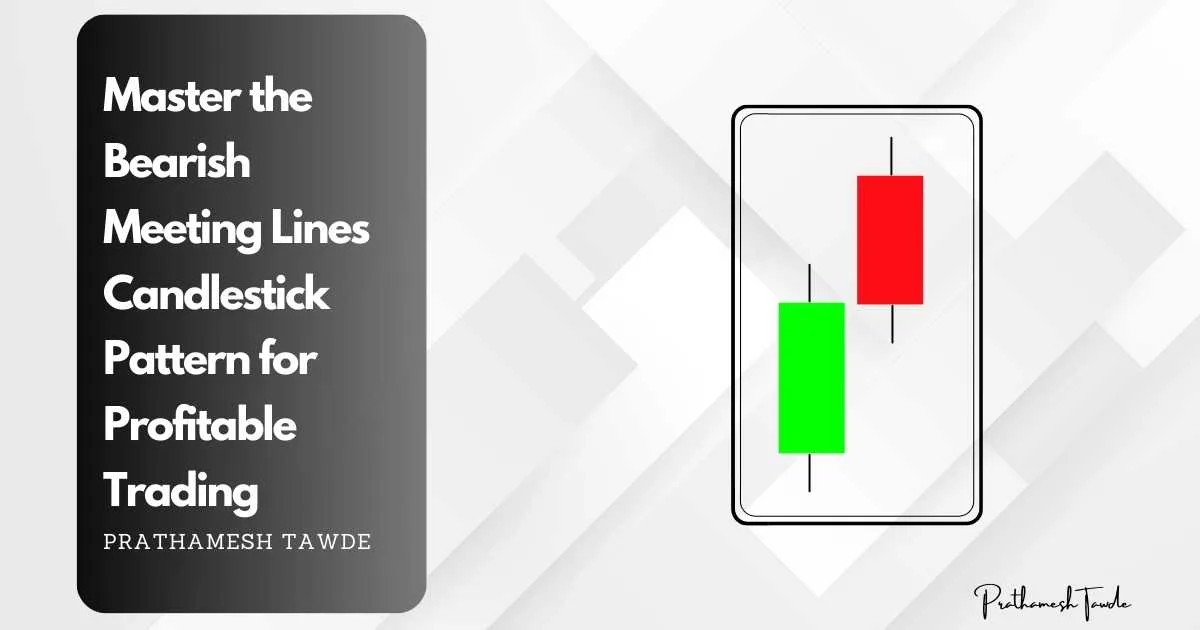Triple Top pattern: 5 Steps to Spot Trend Reversals
- Prathamesh Tawde
- December 16, 2023
Introduction
Understanding the Triple Top Pattern in Technical Analysis
In the world of financial markets, technical analysis studies patterns. They are like footprints left by market sentiment and dynamics. Among these patterns is the Triple Top. Its potential to signal trend reversals is significant. This earns it a revered place. This pattern empowers traders and investors. It gives them insights into potential market moves. It offers chances for strategic decisions. This guide is comprehensive. It covers the pattern in detail. It explores its definition, formation, spotting, importance, trading strategies, and real examples.
Defining the Triple Top
The triple top pattern is a type of chart. It has three peaks at about the same price. Then, the price falls a lot. It is a bearish pattern. It shows a shift from bullish to bearish sentiment.
triple top chart pattern
How To Find Triple Top Chart Pattern Using Chartink.Com
Chartink.com Overview
Chartink.com is an online stock screener and charting tool. It lets traders scan for technical patterns and analyze market trends. Chartink.com has customizable filters and an easy interface. It’s a great resource for traders.
Below is the screenshot of how the websibsite looks , You can simply

You can search for Triple Top Chart Pattern in screeners. It will show you all stock charts with a hammer pattern.
What is a triple top pattern?
The Triple Top is a bearish reversal pattern. It’s commonly seen in financial charts, especially in stocks, forex, and commodities. It has three peaks at about the same price. They are separated by two lower troughs. Visually, it looks like an “M.” This shows a failed attempt to break a resistance level. It led to a reversal in the uptrend.
A pattern shows a shift in market sentiment. It goes from bullish to bearish as buyers lose momentum and sellers gain control. Each peak in the pattern shows a failed attempt by buyers to raise the price. They met resistance at a critical level. As the price falls from each peak, it forms troughs. These state temporary support levels. The market has confirmed the pattern. This happens when the price breaches the support level formed by the troughs. This breach signals a potential downtrend.
Identification of the Triple Top Pattern
Spotting the pattern needs a keen eye for charts. You also need to understand price action. Traders often use technical analysis tools. These include chart patterns, trendlines, and volume indicators. They use these tools to spot potential Triple Top formations. Here are the key steps in identifying the pattern:
Three Peaks: The triple top pattern’s main feature is three distinct peaks. Each peaks reaches a similar price. These peaks show that buyers could not push the price past a resistance point.
Price Trend: The Triple Top pattern happens after a long uptrend. The asset’s price reaches a resistance level many times without breaking through.
Peaks:Look for three distinct peaks in the price chart. Each peak reached about the same price. These peaks represent failed attempts to surpass the resistance level.
Troughs: Identify two intermediate troughs that form between the peaks. These troughs show temporary support levels. Buying pressure at them stops the price from falling further.
Volume Confirmation: Ideally, traders want to see volume drop as the pattern develops. The drop in volume suggests waning bullish momentum. It adds weight to the pattern’s validity.
Breakdown of Support: Traders confirm the triple top pattern when the price breaks below the support. The troughs form this level. This breakdown validates the bearish reversal and signals a potential downtrend.
Significance of the Triple Top Pattern
The pattern is important for traders and investors. It can forecast trend reversals. Here are some key reasons why the pattern is significant:
Reversal Signal: The Triple Top pattern is a reliable bearish reversal signal. The pressure to buy has been exhausted. Market sentiment may shift from bullish to bearish.
Resistance Identification: The three peaks in the Triple Top pattern help traders. They mark a strong resistance level. At this level, selling pressure beats buying pressure, causing the uptrend to reverse.
Risk Management: Recognizing the Triple Top pattern helps traders manage risk. They can place stop-loss orders above the pattern’s highs to cap losses if a reversal fails.
Market Psychology: The pattern forms due to market psychology. It shows the struggle between buyers and sellers at a critical price. Understanding this psychology can provide valuable insights into future price movements.
Trading Strategies
Trading the pattern requires careful planning, risk management, and patience. Traders can use many trading strategies. They can use them to take advantage of this bearish reversal pattern:
Short Position: Once the Triple Top pattern is found and confirmed, traders can sell the asset to start a short position. They do this near the support level formed by the troughs. An investor can place a stop-loss order above the pattern’s highs. This limits potential losses.
Target Price: You can estimate the target price for a trade based on the Triple Top pattern. Do this by measuring the pattern’s height. This is the distance between the peaks and the support level. Then, subtract this height from the breakdown point. This provides a potential price target for the downward movement.
Confirmation Signals: Traders may look for more signals. For example, a spike in trading volume can go with the breakdown of the support level. This strengthens the validity of the Triple Top pattern.
Re-test: In some cases, the price may re-test the breakdown level after the initial decline. Traders should be ready for such scenarios. They should adjust their positions based on price and volume.
Real-World Examples
Let’s look at two examples from real trading. They show how to use the pattern in different markets.
Stock Market: Consider a hypothetical scenario. Company XYZ’s stock has been in a steady uptrend for several months. It reached a resistance level at $100. Despite many tries, the price fails to break above $100. It forms three peaks near this level, with two troughs between them. Once the price breaks below $90, it confirms the Triple Top pattern. Traders expect a bearish reversal and start shorting, targeting lower prices.
Forex Market:In the forex market, assume the EUR/USD is trending up. It is nearing a key resistance at 1.2000. The price failed to break above 1.2000 three times. Troughs formed around 1.1800. Then, the price breaks below the support. This confirms the Triple Top pattern. Forex traders see this pattern. They may enter short positions on the EUR/USD pair, expecting a downward trend.
triple top and triple bottom
Triple Top Pattern:
- Triple Top Pattern: The price forms three distinct peaks. They are at about the same level. This indicates strong resistance.
Consistent Resistance: Each peak fails to breach a particular resistance level, reinforcing its significance.
Bearish Reversal Signal: A Triple Top forms. It suggests a shift from bullish to bearish sentiment. This prompts traders to consider short positions or to exit long ones.
Triple Top patterns show resistance to upward movement. They signal a potential bearish reversal.
Top Triple patterns predict a downtrend.
Triple Bottom Pattern:
- Three Troughs: The price forms three clear troughs. They are at about the same level. This shows strong support.
Consistent Support: Each trough finds support at a certain level. This shows the level’s importance in ending the downtrend.
Bullish Reversal Signal: A Triple Bottom pattern shows a shift from bearish to bullish sentiment. This prompts traders to consider long positions or exit short ones.
Triple Bottom patterns show support against downward movement. They state a potential bullish reversal.
Triple Bottom patterns predict an uptrend.
Limitations and Considerations
The pattern can reliably show a bearish reversal. But it’s crucial to consider its limits:
False Signals: Not all triple top patterns result in a significant reversal. Some may fail to appear. This can lead to false signals and losses for traders who’ve acted too soon.
Confirmation: It’s advisable to wait for confirmation of the pattern before taking action. This confirmation could come in a decisive breakout. It would be below the support level and have high volume.
Market Conditions: The triple top pattern’s effectiveness can vary. It depends on market conditions and the broader trend. Consider other indicators and market factors. They are crucial when making trading decisions.
Conclusion
The Triple Top pattern is a powerful tool for technical analysts. It offers valuable insights into potential trend reversals in markets. Understanding how this pattern forms is important. Knowing how to spot it, what it means, and how to trade it can help traders and investors. They’ve made informed decisions to profit from bearish markets. However, traders should use the Triple Top indicator with other tools. They should do this like any other indicator. This will enhance its effectiveness in trading and investing.
FAQ
The triple top pattern is a bearish reversal pattern observed in technical analysis. It has three peaks at about the same price level. The peaks are separated by troughs. They show a failure to break a particular resistance level.
Look for three clear peaks in the price chart. They each reach a similar high point, with troughs between them. The peaks should occur near a set resistance level. Trading volume may drop as the pattern forms.
The triple top pattern suggests a shift in momentum from bullish to bearish. It shows that the market has failed three times to pass a resistance level. This signals that the asset’s price may fall.
The triple top pattern’s effectiveness can vary. It depends on market conditions and the broader trend. It can reliably show a bearish reversal. But, traders should use it with other tools. They should also be cautious to limit risks.
Traders enter a short position by selling. They do this once the price breaks below the support level. This level connects the troughs between the three peaks. Traders often place stop-loss orders above the recent swing high to manage risk. They set profit targets by measuring the distance from the peak to the support level.

I’m Prathamesh Tawde, a leading figure in the dynamic world of financial markets. Born on March 30, 1986, in the vibrant city of Thane, Maharashtra, I’ve nurtured a profound passion for technical analysis and a commitment to guiding individuals toward successful trading journeys. With a mission to empower and educate, I’ve carved a distinct niche as a content creator, educator, and mentor.





